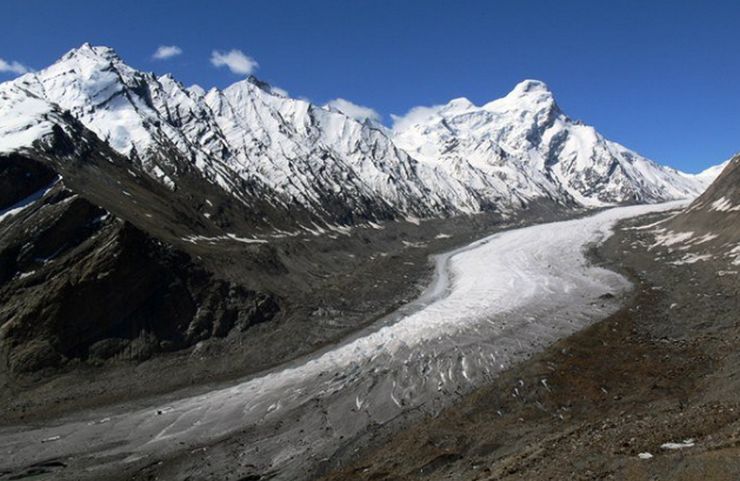India is a geographically diverse country, home to towering mountains, dense forests, vast deserts, and extensive coastlines. Scattered across this vast geographical expanse are several significant mountain passes that are not only geographically crucial but also hold immense historical, cultural, strategic, and economic importance. Studying these passes is particularly valuable for educational purposes.
1. Important Passes in the Himalayan Region
The Himalayan passes connect India with neighboring countries like China, Nepal, and Bhutan. These passes serve as vital routes for traversing natural barriers.
(i) Khardung La
- Location: Ladakh
- Elevation: Approximately 5,359 meters
- Significance:
- One of the highest motorable passes in the world.
- Connects Leh to the Siachen Glacier and Nubra Valley.
- Strategically used by the Indian Army.
- Unique Feature: Harsh weather conditions and a challenging route make it a hub for adventure tourism.
(ii) Rohtang Pass
- Location: Himachal Pradesh
- Elevation: 3,978 meters
- Significance:
- Connects the Kullu Valley to the Lahaul and Spiti Valleys.
- Used for trade and travel.
- Known for its snow-covered landscapes, attracting tourists.
- Challenges: Heavy snowfall during winter often renders the pass inaccessible.
(iii) Nathu La
- Location: Sikkim
- Elevation: 4,310 meters
- Significance:
- A critical trade route between India and China.
- Closed after the 1962 India-China war and reopened in 2006.
- Acts as a cultural and trade link between the Tibetan Plateau and the Indian subcontinent.
(iv) Zoji La
- Location: Jammu and Kashmir
- Elevation: 3,528 meters
- Significance:
- Connects the Kashmir Valley to Dras and Kargil.
- Strategically important for the Indian Army.
- Closed during winter due to heavy snowfall.
2. Important Passes in Northeast India
(i) Sela Pass
- Location: Arunachal Pradesh
- Elevation: 4,170 meters
- Significance:
- Connects Tawang to other regions.
- The nearby Sela Lake is a popular tourist attraction.
- Strategically important due to its proximity to China.
(ii) Bum La
- Location: Arunachal Pradesh
- Elevation: 4,633 meters
- Significance:
- Located on the India-China border.
- Played a key role in the 1962 war.
- Currently a military zone with limited tourism access.
(iii) Difu Pass
- Location: Arunachal Pradesh
- Significance:
- Lies at the tri-junction of India, China, and Myanmar.
- Historically used as a trade route.
3. Passes in the Western Ghats and Southern India
The Western Ghats in southwest India are home to several passes crucial for transportation and trade.
(i) Thal Ghat
- Location: Maharashtra
- Significance:
- Connects Mumbai with Nashik.
- An important route for the Indian Railways.
(ii) Bhor Ghat
- Location: Maharashtra
- Significance:
- Connects the Konkan region with Pune.
- Historically developed by the British for transportation.
4. Historically and Strategically Significant Passes
(i) Lipulekh Pass
- Location: Uttarakhand
- Elevation: 5,200 meters
- Significance:
- Situated at the tri-junction of India, Nepal, and Tibet.
- A key route for the Kailash Mansarovar Yatra.
- Frequently in the news due to border disputes between India and Nepal.
(ii) Mana Pass
- Location: Uttarakhand
- Elevation: 5,632 meters
- Significance:
- Connects India with Tibet.
- Historically part of the ancient Silk Route.
(iii) Shipki La
- Location: Himachal Pradesh
- Significance:
- A vital trade route between India and Tibet.
- The Satluj River enters India through this pass.
Importance of Mountain Passes
India’s mountain passes hold geographical, historical, and strategic significance.
- Trade and Transport:
- Since ancient times, passes have been used as trade routes.
- They continue to be vital for connectivity and transportation.
- Strategic Importance:
- Many passes lie on India’s borders with China and Pakistan.
- These passes are critical for the Indian Army.
- Tourism:
- Passes like Khardung La, Rohtang, and Sela are major tourist attractions.
- They offer adventure opportunities like trekking and biking.
- Geographical Studies:
- Studying passes helps in understanding geography, climate, and ecosystems.
- Studying passes helps in understanding geography, climate, and ecosystems.
- Cultural Significance:
- Passes have served as conduits for cultural exchange and religious pilgrimages.
Challenges and Conservation
- Natural Disasters:
- Heavy snowfall, landslides, and harsh weather conditions make these passes inaccessible at times.
- Heavy snowfall, landslides, and harsh weather conditions make these passes inaccessible at times.
- Border Disputes:
- Passes like Lipulekh and Bum La are often points of contention between India and its neighbors.
- Passes like Lipulekh and Bum La are often points of contention between India and its neighbors.
- Environmental Impact:
- Excessive human activity near passes can lead to environmental degradation.
Conservation Measures:
- Prioritize environmental conservation near passes.
- Balance military and tourism activities to protect ecosystems.
Conclusion
India’s mountain passes are not just pathways through challenging terrains but also gateways to the nation’s cultural, historical, and strategic heritage. Understanding their importance and conserving them is our collective responsibility. These passes not only offer geographical insights but also reflect India’s diversity and strategic strength.
Image Source: https://hindi.webdunia.com/mountains-tourism/himalayas-travel-121022600055_1.html




